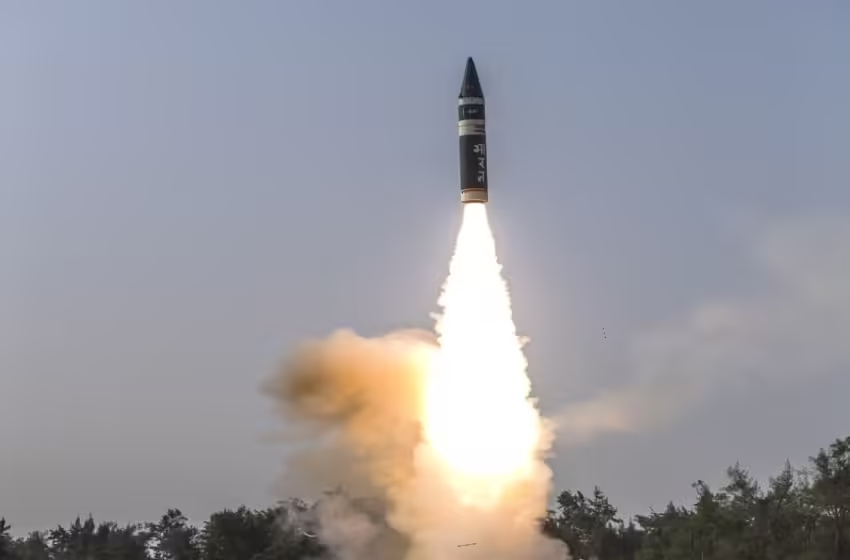
Can India’s Agni-P Pose a Challenge to China’s DF-21D Anti-Ship Dominance?
India’s Defence Research and Development Organisation (DRDO) is presently developing the Agni-Prime (Agni-P) medium-range ballistic missile for strategic applications. Expected to soon fulfill both tactical and strategic roles with either nuclear or conventional warheads, Agni-P showcases DRDO’s advancements in missile technology.
It is heralded as a new-generation missile, lighter than previous Agni series due to its composite and lightweight electronic components. Comparable to China’s DF-21D, Agni-P is positioned in the same category, aiming to challenge existing paradigms of anti-ship dominance.
Features of Agni-P
Agni-P, a solid-propellant, two-stage medium-range ballistic missile, boasts significant enhancements over its predecessors. It can achieve distances of 1,000 to 2,000 kilometers with a Circular Error Probability (CEP) of less than 10 meters. Notably, it supports canister launch capability and extends operational range, underscoring its readiness and versatility compared to non-canisterized designs. Further operational efficiency is gained by pre-fitting the nuclear warhead before canister deployment.
Incorporating technologies from Agni-4 and Agni-5, Agni-P features composite rocket motors, a ring laser gyroscope-based inertial navigation system augmented by satellite and micro-navigation systems. Its dual redundant navigation and guidance systems—micro inertial navigation and inertial navigation systems—ensure precision and maneuverability during the terminal flight phase.
Comparison with China’s DF-21D
Agni-P incorporates state-of-the-art technologies including advanced propulsion, guidance, control mechanisms, and navigation systems, distinguishing it from the DF-21D.
Equipped with a Manoeuvrable Re-Entry Vehicle (MaRV), Agni-P can perform precise maneuvers during re-entry, enhancing its ability to evade interception—a capability absent in the DF-21D. With a payload capacity of 1.5 tons housing a single MaRV, Agni-P surpasses the DF-21D’s 600-kilo payload capacity.
Agni-P’s range of 1,000 to 2,000 kilometers and high accuracy underscore its developmental maturity, backed by successful testing. In contrast, the DF-21D, while operational, lacks comparable recent testing and developmental milestones.
Stored in a canister for enhanced mobility, storage, and rapid deployment, Agni-P offers logistical advantages over the DF-21D.
Physical dimensions of Agni-P (length: 10.5 meters, diameter: 1.15 meters, weight: 11 tons) reflect its compact yet technologically superior design compared to DF-21D.
Agni-P’s advanced technology and MaRV capabilities make it an effective countermeasure against anti-ballistic missile systems.
Targeting Moving Ships
Initially not designed as an Anti-Ship Ballistic Missile (ASBM), Agni-P’s advanced guidance, maneuverable warhead, and potential for radar seeker integration suggest its viability as an ASBM platform, akin to China’s DF-21D. Indian defense experts foresee Agni-P contributing to ongoing ASBM research and development, enhancing India’s naval capabilities against Chinese forces in the Indian Ocean.
Integration of a radar seeker could enable Agni-P to effectively target moving naval vessels, leveraging its terminal phase accuracy and maneuverability. This development path mirrors China’s DF-21D evolution into an ASBM.
While DF-21D pioneered ASBM capabilities, other nations like the United States, Russia, Iran, and North Korea are also advancing in this sphere, highlighting a global trend toward developing anti-ship ballistic missiles.
In summary, Agni-P represents a significant advancement in India’s missile technology, challenging existing norms in ballistic missile capabilities and potentially redefining regional strategic dynamics.



